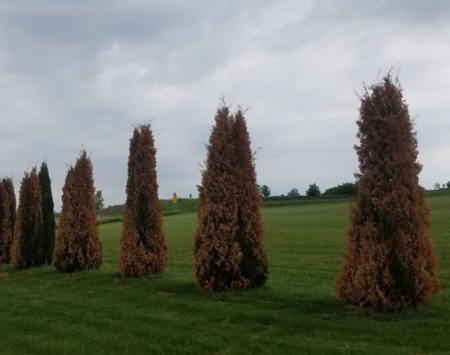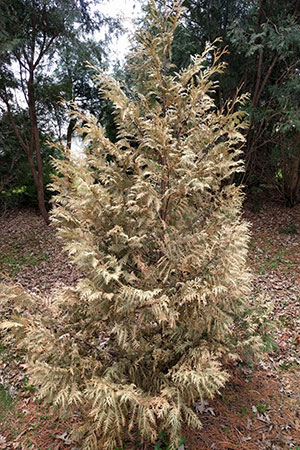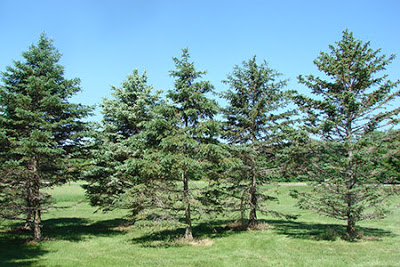Click below to listen to my 2 min. Garden Bite radio show: Tough season for trees around the Upper Midwest
Yesterday it was about flooding and your vegetable and fruit plants. Today, I’m going to talk about the unholy winter of 2017/18. Or the winter that wouldn’t end and then, suddenly, it did. That was rough on Evergreens in the Upper midwest.

As you may recall…there were pockets of heavy piled up snow in April and then in late April we had warm, very windy days with low relative humidity which caused needles to lose moisture. The frozen soil in the root zones of these trees prevented water from moving back into the needles to replace the lost moisture.

Take a drive down many a rural road and you’ll see brown evergreens. DNR Forest Health Specialist Brian Schwingle suggests removing any conifer with more than half of its branches killed by winter drying to avoid an attack by bark beetles.
The crazy stuff didn’t end there. On to black spruce. Have the needles on the lower branches of your spruce tree died? The DNR says it’s a common tree health concern.

Spruce trees planted in a row are susceptible to a needle cast disease caused by a fungus. Stigmina needle cast disease appears when there’s lots of rain, and moist conditions around your tree(s). They are particularly susceptible if planted in a low-lying area. If your tree is growing by itself in the sun and away from other trees with good air circulation, it will rarely be affected. The recommendation is to alternate spruce with different trees if you plant in a row. Remove every other spruce whose branches touch and prune the lower canopy.
More information HERE on the above and also on the white cedar in Northern Minnesota that suffered damage from winter and/or a pest.
